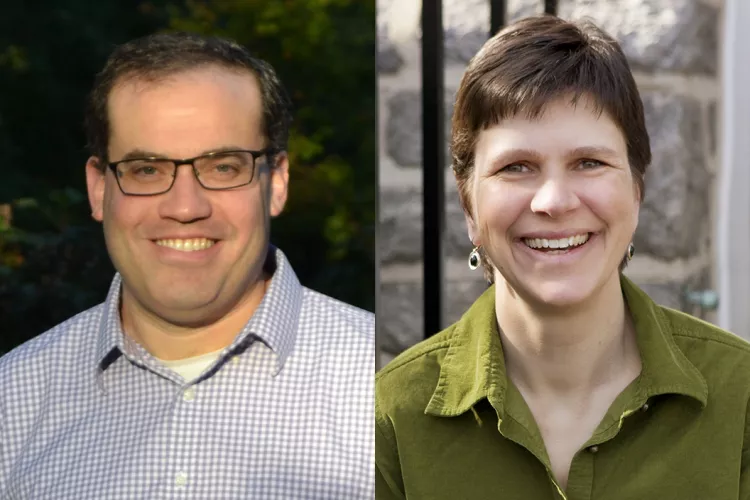Ben Geller and Catherine Crouch Receive NSF Grant to Study How Students Develop Connections Between Physics & Biology

Assistant Professor of Physics Ben Geller and Professor of Physics Catherine Crouch were recently awarded a $300,000 grant from the National Science Foundation (NSF) to explore how students come to develop lasting connections between physics and biology.
They will focus on such connections in Swarthmore’s Physics 3L-4L curriculum, an introductory course geared toward life science students, but with an eye to expanding their research to other institutions that offer similar courses.
The professors note that thousands of students take introductory physics courses each year as a requirement for entering the health professions or studying the life sciences. The goal of the Physics 3L-4L curriculum, then, is to make these courses more engaging for students for whom physics is not necessarily a focus, and to equip them to use their physics knowledge in later studies and careers.
“Our research over the last ten years indicates that the Physics 3L-4L curriculum achieves these goals for most students, though of course not perfectly,” says Crouch. “With our new grant, we hope to gain understanding of how it achieves these goals so that instructors at other places can benefit from the work we’ve done as they seek to offer a similar learning opportunity to their own students.”
Adds Geller: “We want to better understand the mechanisms by which students come to make meaningful connections between physics and their primary interests in biology, biochemistry, neuroscience, or medicine.
“This project gives us a chance to improve the educational experience of Swarthmore students,” he says, “and of students at many other institutions.”
Understanding how courses achieve outcomes is important, Crouch notes, but also challenging, since learning is such a complex process.
“For this project to succeed, we’ll rely on many thoughtful collaborators and colleagues both at Swarthmore and elsewhere,” she says.
With the grant, the faculty will conduct interdisciplinary research with students from within and beyond the natural sciences. Dorwin P. Cartwright Professor of Social Theory and Social Action K. Ann Renninger will serve as a senior consultant on the project, offering expertise in student interest and engagement.
The faculty and students will explore how the content, pedagogical strategies, and messages conveyed with the Introductory Physics for Life Science course shape the students’ experience.
“Life sciences students are increasingly asked to use physical and quantitative tools to answer questions in their coursework and in their careers,” says Geller. “Our goal is to prepare them to do so effectively.”
Student researchers who join the project will engage in the realms of both the qualitative and quantitative. They will learn how to conduct discipline-based educational research, doing statistical analysis while also breaking down students’ written work and interviews.
“What’s unique about educational research like this is that students will also have the chance to reflect on their own experiences at Swarthmore,” says Geller. “Swarthmore students are well positioned to work on a project like this because the methods are accessible, even for those early in their time here, and because they are so thoughtful about their own learning.”
Students interested in joining the project can contact Geller at bgeller1@swarthmore.edu or Crouch at ccrouch1@swarthmore.edu.



